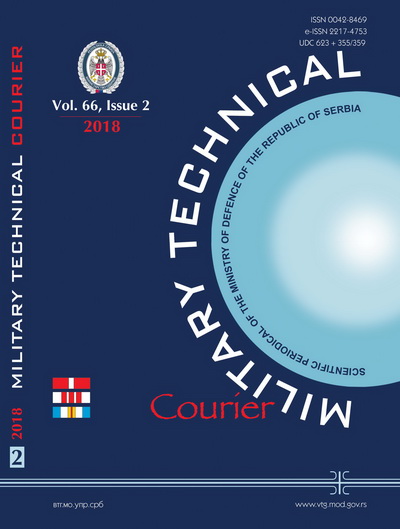The method of “external spiral” for solving a large system of linear equations
Abstract
Solving a linear system of n × n equations can be very difficult for the computer, especially if one needs the exact solution, even when the number n - of equations and of unknown variables is relatively small (a few thousands). All existing methods have to overcome at least one of the following problems: 1. Computational complexity, which is expressed with the number of arithmetic operations required in order to determine a solution; 2. The possibility of overflow and underflow problems; 3. Causing variations in the values of some coefficients in the initial system, which may be leading to instability of the solution; 4. Requiring additional conditions for convergence; 5. In cases of a large number of equations and unknown variables it is often required that the systems matrix be: either sparse, or symmetrical, or diagonal, etc. This paper presents a method for solving a system of linear equations of arbitrary order (any number of equations and unknown variables) to which the problems listed above do not reflect.
References
Boht, Z. 1978. Numerčne metode. Ljubljana: Državna založba Slovenije (in Slovenian).
Gajić, Z., Lim, M-T.,Škatarić, D., Su, W-C. & Kecman, V. 2008. Optimal Control: Weakly Coupled Systems and Applications (Automation and Control Engineering), 1st ed. Boca Raton, FL: CRC Press.
Higham, N. 2002. Accuracy and Stability of Numerical Algorithms, 2nd ed. Philadelphia, PA: SIAM - Society for Industrial and Applied Mathematics.
Randall, D.A. 2015. An Introduction to the Global Circulation of the Atmosphere. Princeton, NJ: Princeton University Press.
Srdanov, A. & Stefanović, R. 2017. Kako rešiti linearni sitem sa ekstremno mnogo nepoznatih. In: INFOTEH, Jahorina, pp.593-596, March (in Serbian).
Stoer, J. & Bulirsch, R. 2002. Introduction to Numerical Analysis, 3rd ed. New York: Springer.
Proposed Creative Commons Copyright Notices
Proposed Policy for Military Technical Courier (Journals That Offer Open Access)
Authors who publish with this journal agree to the following terms:
Authors retain copyright and grant the journal right of first publication with the work simultaneously licensed under a Creative Commons Attribution License that allows others to share the work with an acknowledgement of the work's authorship and initial publication in this journal.
- Authors are able to enter into separate, additional contractual arrangements for the non-exclusive distribution of the journal's published version of the work (e.g., post it to an institutional repository or publish it in a book), with an acknowledgement of its initial publication in this journal.
- Authors are permitted and encouraged to post their work online (e.g., in institutional repositories or on their website) prior to and during the submission process, as it can lead to productive exchanges, as well as earlier and greater citation of published work (See The Effect of Open Access).

